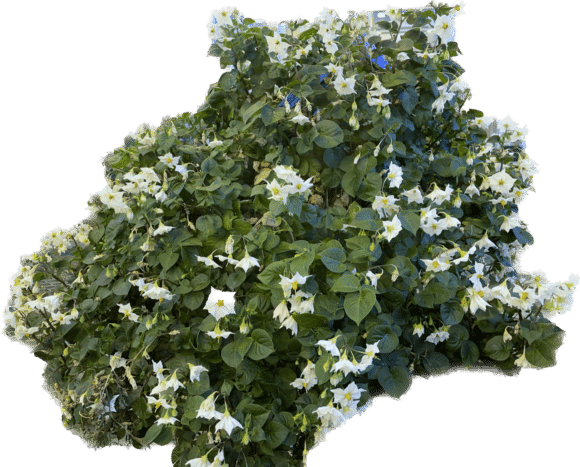New research may help fight back against Colorado potato beetle resistance to protect potato crops.
Experts


Editor’s note: This interview has been edited for length and clarity.
Spud Smart (SS): How do Colorado potato beetles (CPBs) become resistant to insecticides?
Tim Waters (TW): Colorado potato beetles feed on the leaves of solanaceae plants. Solanaceae plants have high concentrations of glycoalkaloids, which many species cannot digest because the toxic nature of those compounds. It is presumed that the evolution of Colorado potato beetle to detoxify these glycoalkaloids predispose them with mutations in the population to easily detoxify pesticides. Being multivotine, which means they have multiple generations per year and a higher reproductive rate, also predisposes them for the development of resistance.
The more eggs that they have, the more likelihood that there’s a genetic mutation in there that can first resist itself. With each female producing 600-plus eggs, there’s a good chance of that. In 1952, a population CPB developed resistance to DDT, and then dieldrin in 1958. Since we’ve been using commercial pesticides against Colorado potato beetle, they’ve been developing resistance. Almost all insecticides introduced in the eastern U.S. have populations of CPB that have developed resistance very rapidly.
SS: How can you manage or reduce insecticide resistance in CPBs?
TW: The number one thing here is do not rely on insecticides alone. Relying on insecticides alone, like we’ve tended to do for the last 70 to 80 years is why we’ve seen potato beetle populations develop such a high level of resistance to such a broad number of insecticides.
One thing we can do to not rely on insecticides alone is crop rotation — so that’s really important. Where I sit in the Columbia Basin, generally, potatoes are grown every one in three or one in four years. What that does is it means that those beetles that persist within that field don’t get exposed to the same insecticide year after year, the beetles have to move to another field in order to find a host. So, rotation is really important.
Physical control is one option that helps. Potato beetles don’t fly very much, they tend to walk from one host to the next. Physical control with things like trenches can be somewhat effective on small plots but tend not to work in large fields.
Another option is to alter planting timing. We know that potato beetles come out of the ground pretty synchronously with nightshade plants. We can look at degree days and if we have the flexibility, we could avoid planting during that major emergence period. You could delay planting a little bit and that would help somewhat with Colorado potato beetle. The problem with that is if you delay planting too much, in some areas you don’t have time to get potatoes to maturity or to the size that you want. Planting early is not a great option because you put the plants at risk for fungal or bacterial problems.
SS: When should growers apply insecticides for CPB control?
TW: Most insecticides for Colorado potato beetle control you want to time at 50 per cent egg hatch. The best way to determine that is by flipping over a lot of leaves and then looking at the colour of the eggs. Colour is not always a good character to use in identifying insects but for potato beetle eggs it is. They start out as very light yellow and the closer they get to emergence the darker colour they get. Flipping over leaves, counting the number of egg masses and then the proportion of those that hatch is how you determine when to make that insecticide application.
We want to time at about 50 per cent egg hatch because most of the insecticides are most effective on the early instar larvae. The larger the larva get, the more that they consume. We want to control that when they’re small. But if we apply at first egg hatch, then we have to make multiple applications to control the first generation. So, waiting to 50 per cent egg hatch ensures that we get a good amount of those eggs that are hatched and that we minimize the number of applications we have to make per generation. The reason we can’t make one application and treat all individuals in that generation at the same time is because they emerge at different times or asynchronously. But waiting for 50 per cent egg hatch is usually the right thing to do.
SS: How is the wild potato relative Solanum okadae resistant to CPBs?
Hanna McCoy (HM): We did this by screening the foliar tissue of Solanum okadae for many classes of compounds, and then hopefully finding a candidate compound that was produced in the leaf. From there, we were able to identify cardiac glycosides.
These caught our eye because these compounds are known to limit heart muscle contractions, which makes them toxic to animals. For centuries, these have been isolated from the plant foxglove for the treatment of heart failure and cardiac arrhythmias. Two common cardiac glycosides that were originally isolated from this plant are called digitoxin and digoxin. These are larger molecules, which makes them very hard to synthesize. To this day these compounds are still isolated from plants, as opposed to synthesized in labs for medical uses.

This was a really novel finding because previously, it was not thought that cardiac glycosides were produced in potato, even in Solanum in general. So, this was really promising for our lab. These compounds have also been noted as a component of some insecticides and rodenticides.
SS: How can these findings be used to improve CPB resistance in commercial potato varieties?
HM: The overall goal of my project is to create a commercial potato with Colorado potato beetle resistance. But more short term, we’re looking at creating DNA markers for cardiac glycosides in potato and also looking at the biosynthetic pathway of cardiac glycosides in Solanum okadae. How these compounds are produced in potato because this has yet to be discovered.
As I mentioned, finding cardiac glycosides in potato is a novel discovery. But also, the target in the beetle has yet to be looked at for beetle resistance. On both sides of it, it’s a novel discovery. It produces a lot of opportunity for breeders and for entomologists when looking at Colorado potato beetle resistance.
Overall, this project will hopefully decrease the number of pesticides that have to be applied to our fields. By creating a plant that is resistant to the beetle hopefully we won’t have to apply as many pesticides, which is great in the eyes of the consumers. But in turn, this will also decrease the carbon footprint of breeders and provide an alternative to pesticides. Which in turn will increase financial gain by saving on crop producing measures, as well as what was previously lost to beetle defoliation will increase our yields.
As I mentioned, cardiac glycosides are used in the medical industry. We still isolate these compounds from plants. By creating a potato that is able to produce great tubers, as well as have beetle resistance through cardiac glycosides, we now have a purpose for the vines that previously just went to waste. This dual-purpose crop provides a whole new market for potato and will allow us to create a new source for cardiac glycosides for the medical industry.
Related Articles
Colorado Potato Beetles are a Mile-High Headache
No Margin of Error to Control the Colorado Potato Beetle
Colorado Potato Beetles Break Down, Regrow Muscle to Survive Winter








